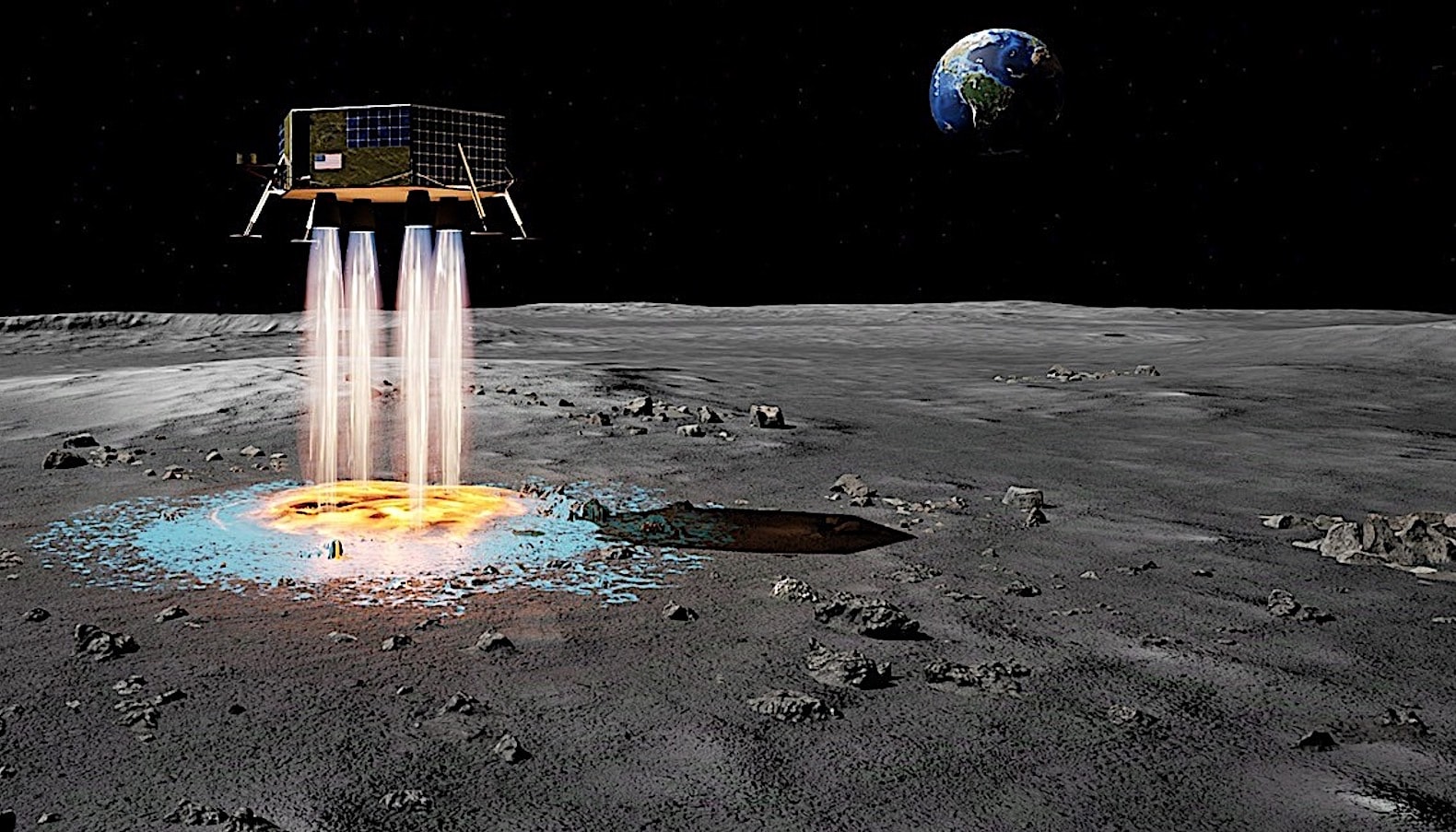
Plume-surface interactions (PSI). That’s a term you might not have heard much about until now, but when the Artemis missions to the Moon really get going, there’s no way around it. And it may prove to be a real obstacle to our plans.
This interaction between these plumes and the surface could sandblast the hardware in the vicinity of the landing site, reduce visibility, and erode the area around the vehicle, impacting operations. And the bigger the spacecraft, the bigger the problem.
The landers of the Apollo program weighed about 10 metric tons, whereas the ones to be used by Artemis will tip the scales at at least double that. To slow them down, much more powerful rocket engines will be needed, and that, in turn, means a much larger quantity of ejected regolith. Estimates are some of this regolith will be thrown around at speeds of up to 6,711 mph (10,800 kph).
That’s why NASA is looking for ways to keep as much regolith as possible in place when the Artemis spacecraft arrives.
The problem is something several companies are looking into, but the space agency also turned to undergraduate and graduate college students for help. It did so through a competition called Human Lander Challenge (HuLC).
Launched in 2023, HuLC announced its winners at the beginning of July, and as promised we’re now starting to look into what these ideas are all about. We’ve already discussed the Synthetic Orbital Landing Area for Crater Elimination (SOLACE) self-propelled landing pad imagined by a team from the Texas A&M University, but now it’s time for something a bit more extreme.
Enter the PARSEC, or Plume Additive for Reducing Surface Ejecta and Cratering. It’s an idea coming from the Embry-Riddle Aeronautical University, Prescott, and it received the excellence in systems engineering award during the NASA competition, alongside the SOLACE.
PARSEC is an idea we’ve come across before, and it basically calls on using an additive and the rocket engines themselves to create an instant landing pad right beneath the spacecraft, by simply melting and then bonding regolith.
The idea is as simple as it is tricky to put into practice. As they descend, burning hot rocket engines will melt the surface with the power of some 3,000 degrees Kelvin (4,940 degrees Fahrenheit / 2,727 degrees Celsius).
Instead of letting the result of the descent go to waste, but also in a bid to prevent regolith from being displaced, an additive will also be shot into the surface to create a temporary and solid landing pad.
The PARSEC idea relies on an onboard additive-deployment system that injects a granular additive into the exhaust plume. The additive will reach the surface in a molten state but will later begin to conglomerate the regolith below. Once solidified, the landing pad is ready for use.
Such a solution would reduce the amount of cratering caused by landings, but also reduce the volume of ejecta. On top of it all, it would also create a stable base for the ship to sit on.
To prove the idea works, the Embry-Riddle team conducted a series of tests using several additives. Not all of them worked as imagined, but in some cases the team did record formations of conglomerated surface – proof that the idea has some merit.
That’s something NASA seems to believe as well, hence the award it handed over to the team. The problem is the HuLC program is supposed to come up with a viable solution to the PSI problem preferably before Artemis gets going with humans on board.
As per the researchers behind PARSEC (full details on it can be found in the PDF attached below this text), a lot of research needs to be conducted before the system can be deployed on an actual spacecraft. After all, the resulting pad must be both able to support the spacecraft, but also to withstand the harshness of the lunar environment.
First, the additive storage and delivery system needs to be imagined. Then, the proper additive must be selected, from a list that includes SiAlON, alumina, zirconia, ZTA, and nickel alloys. Most of all, the team calls for “numerical and experimental tests on larger scales, under accurate environmental conditions.”
Additive-spitting rocket engines are, coincidentally, what a company called Masten Space Systems was working on a while back. Its idea is called Flight Alumina Spray Technique (FAST) and relies on ceramic particles being sprayed over the lunar regolith during landing.












